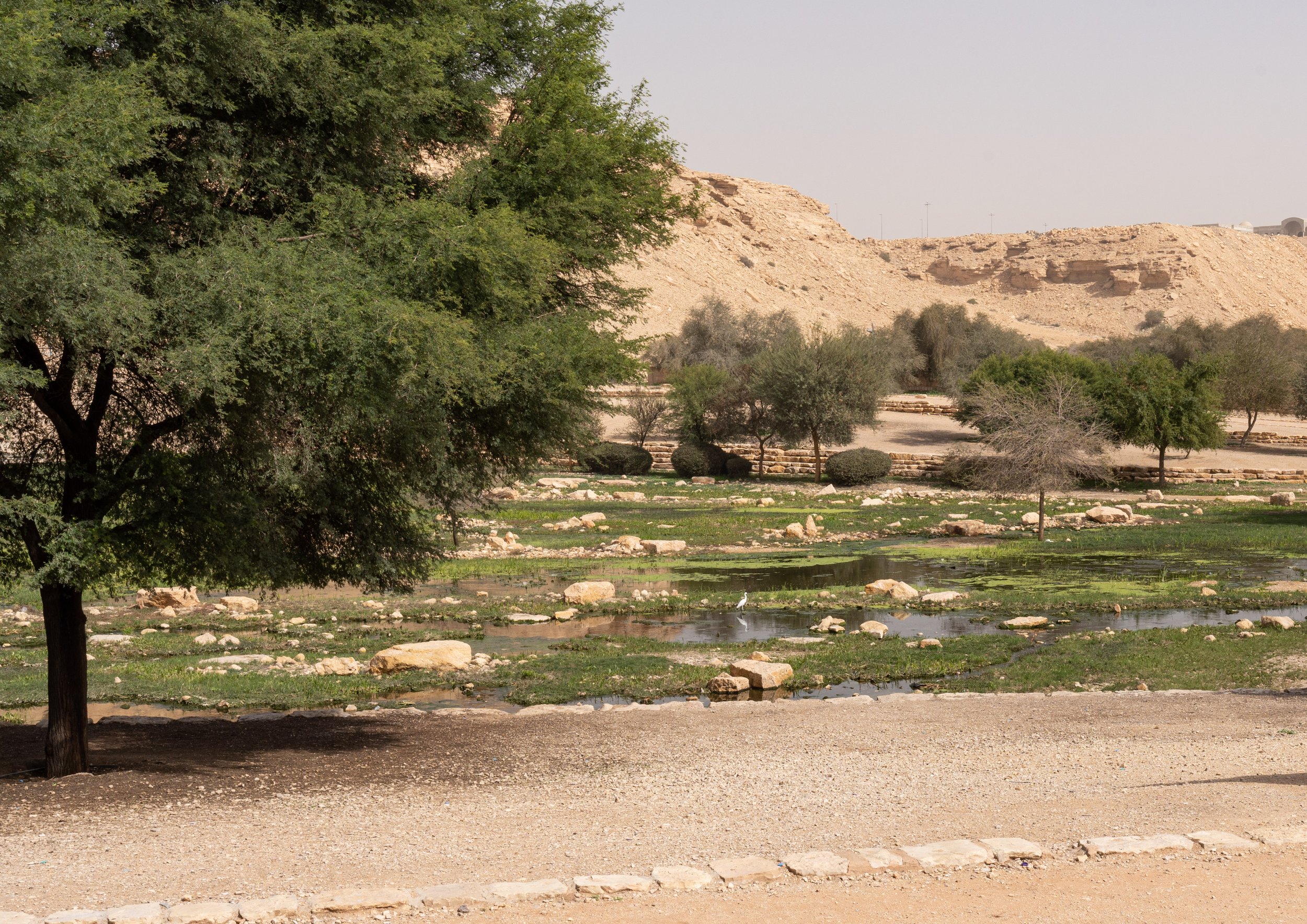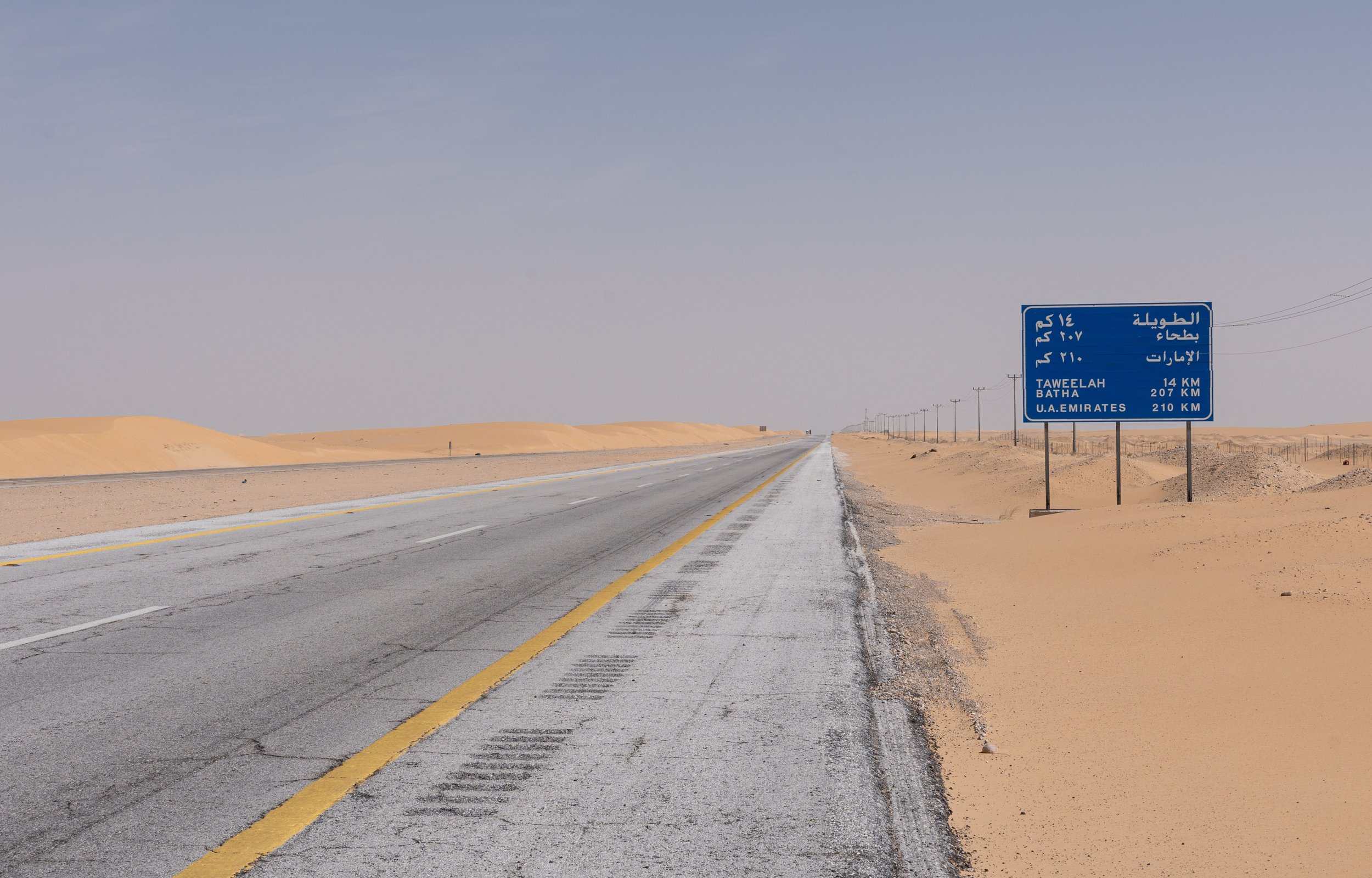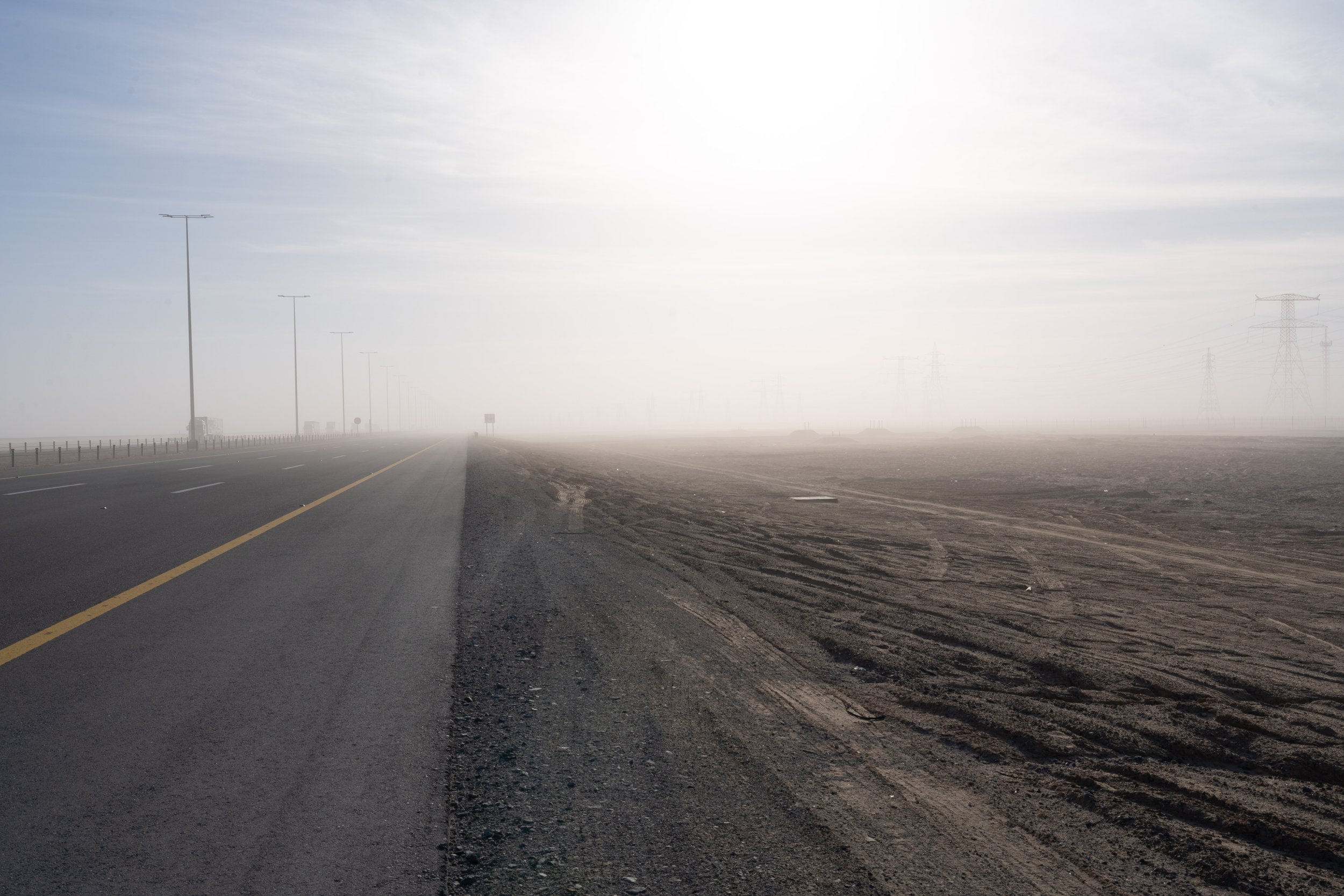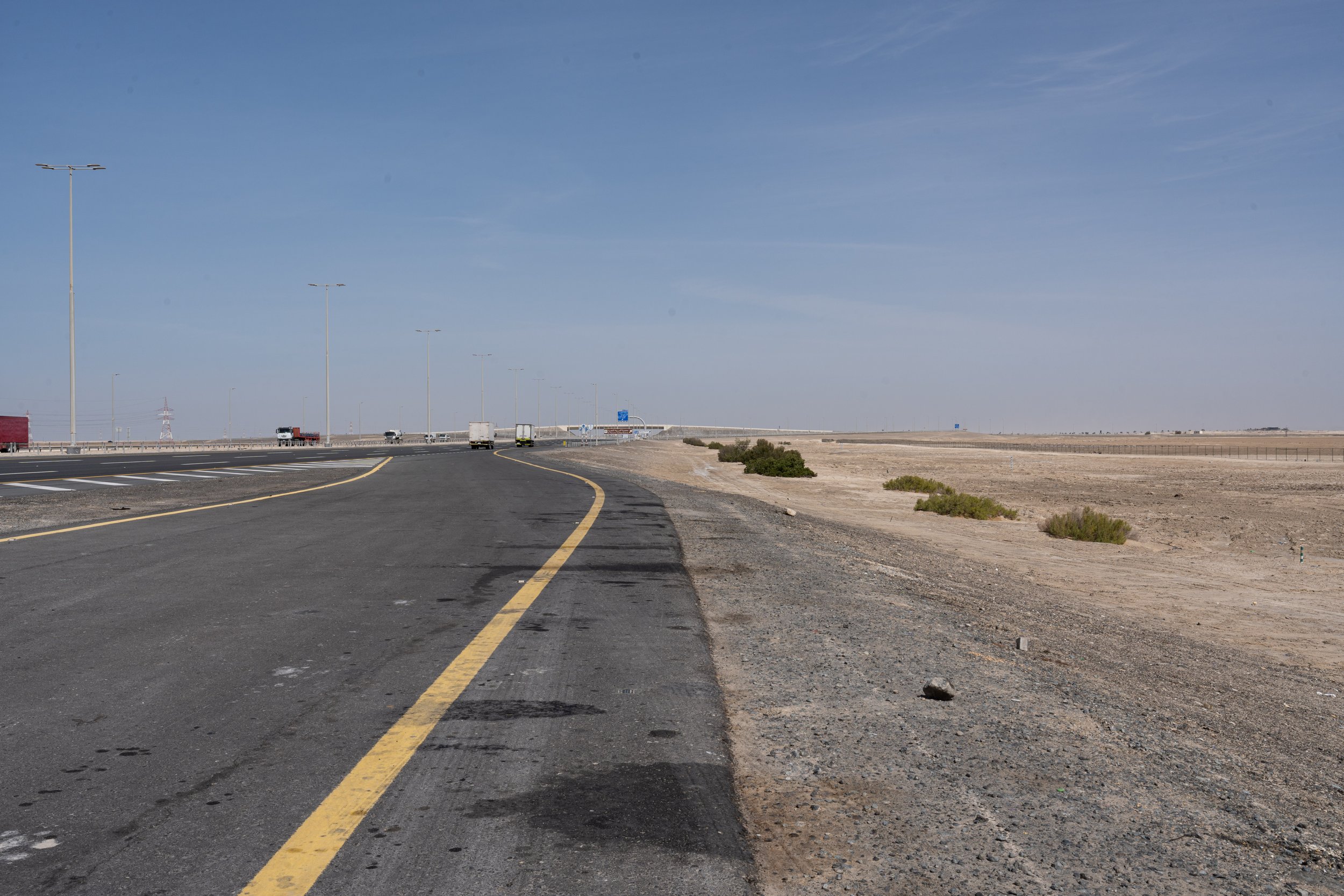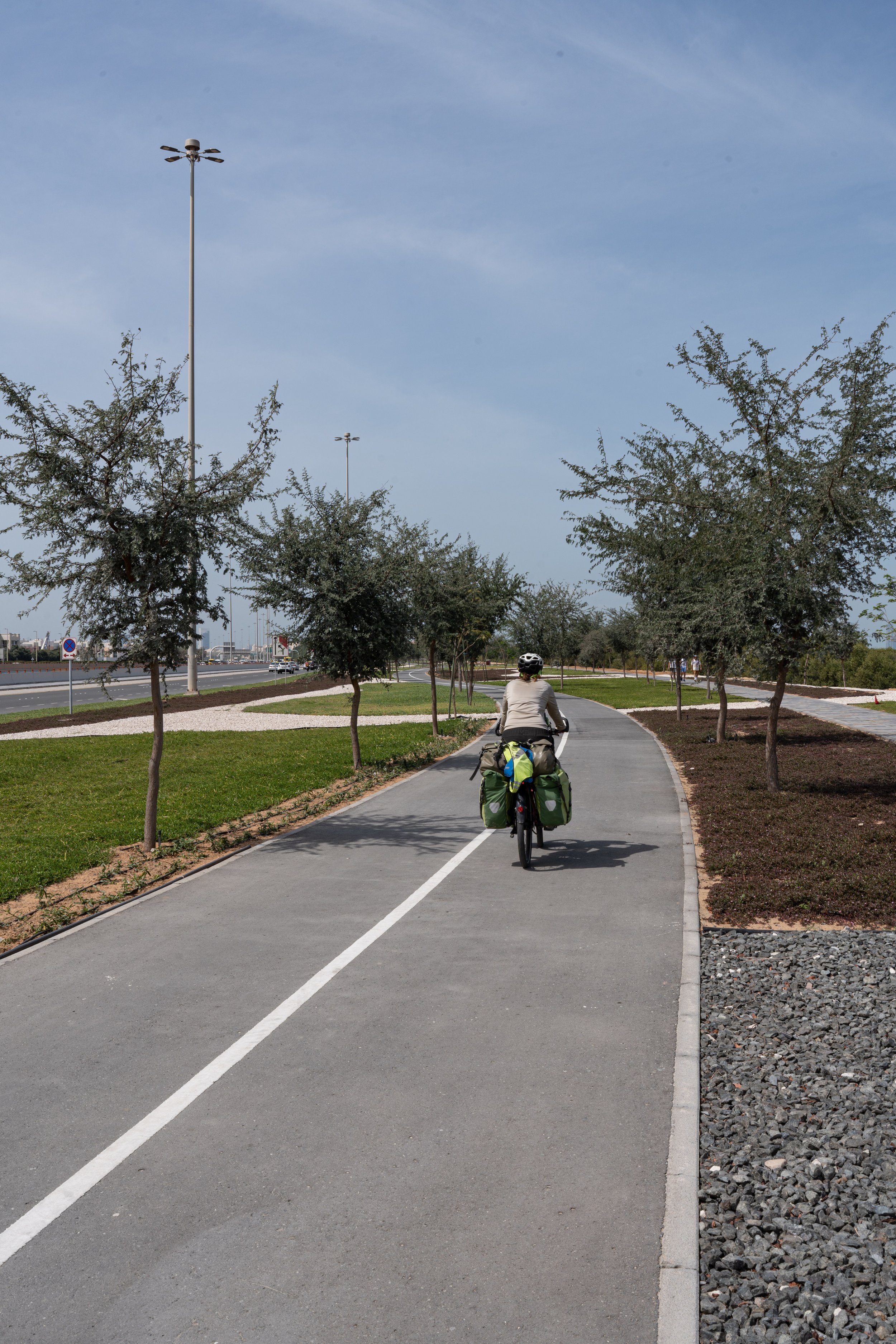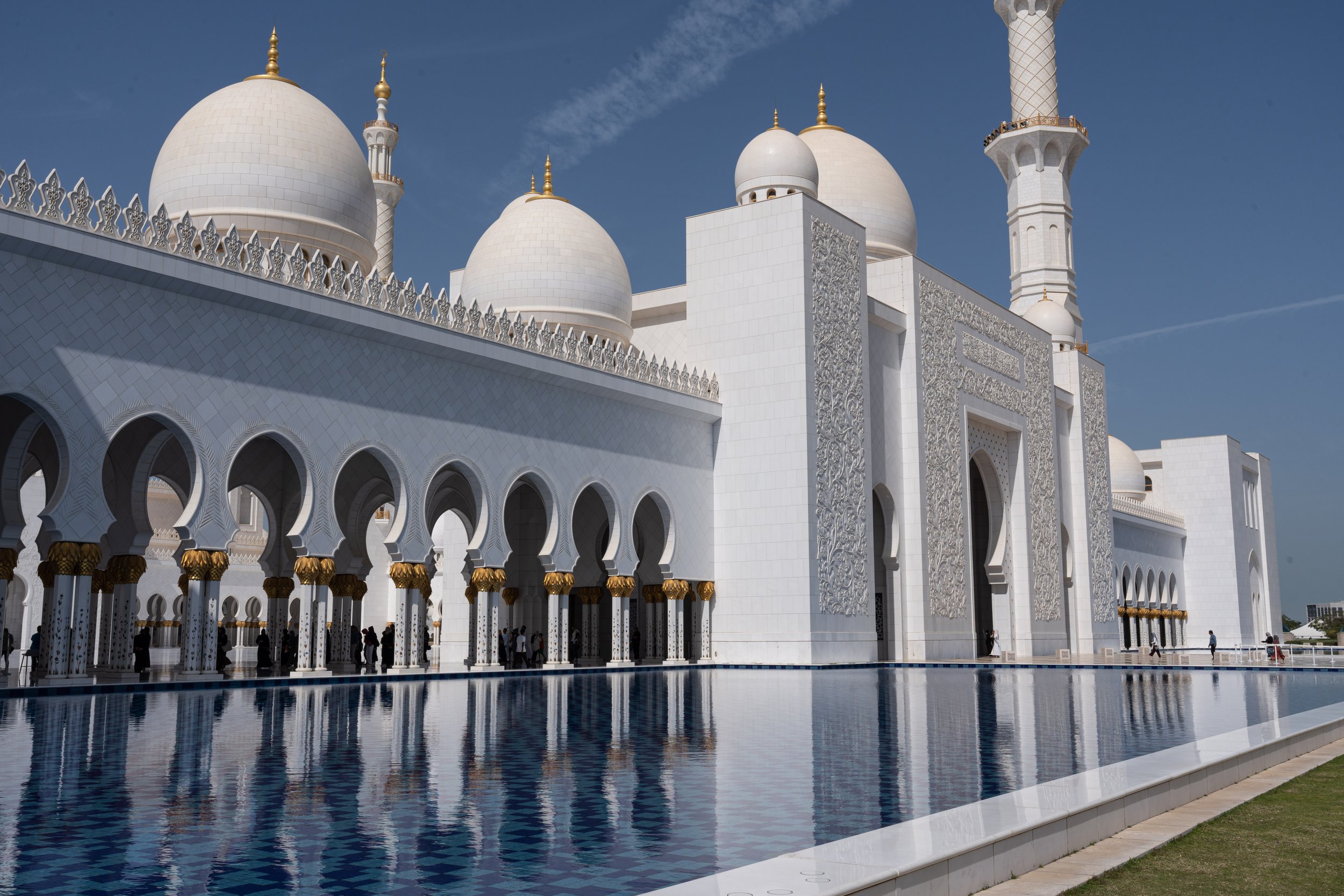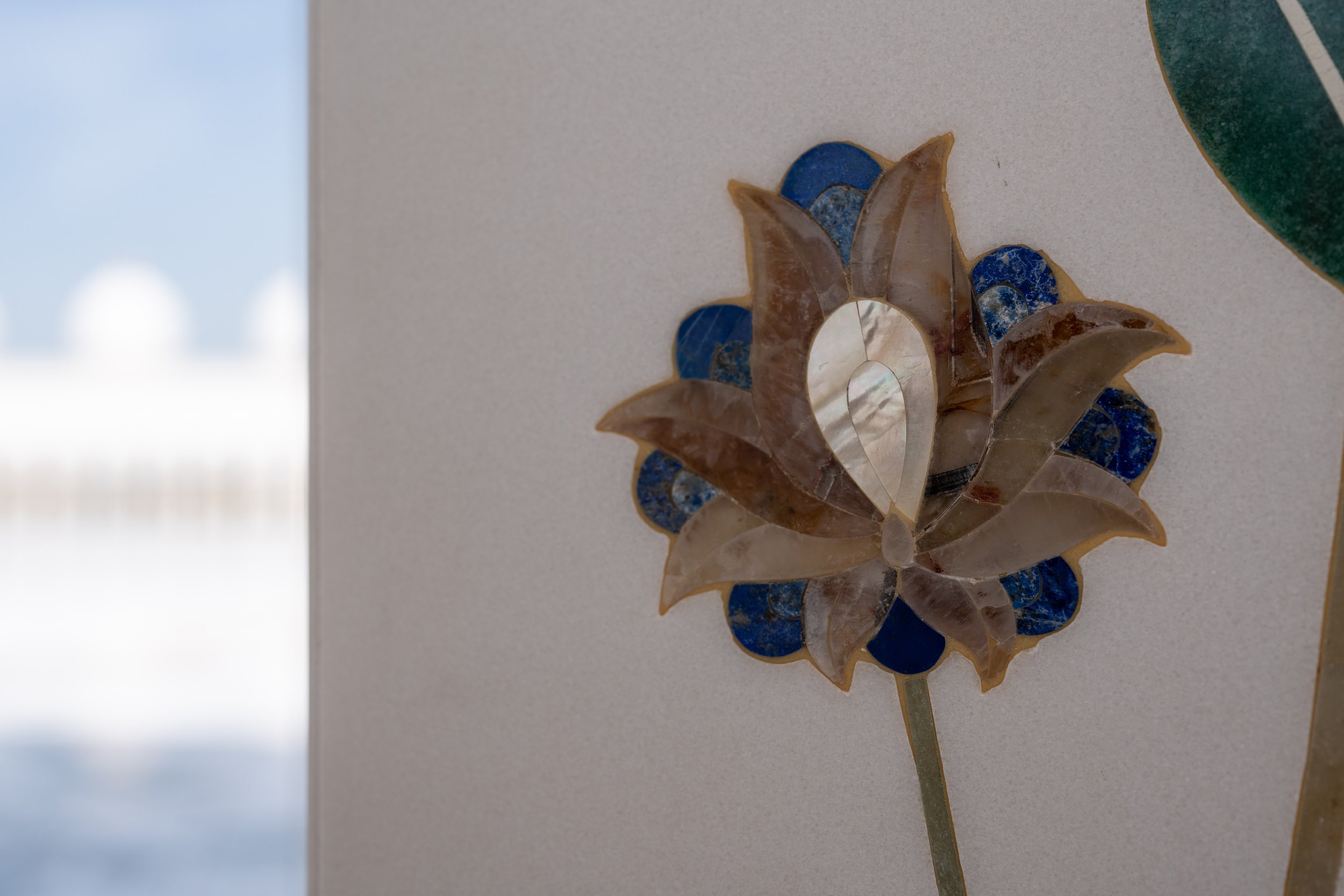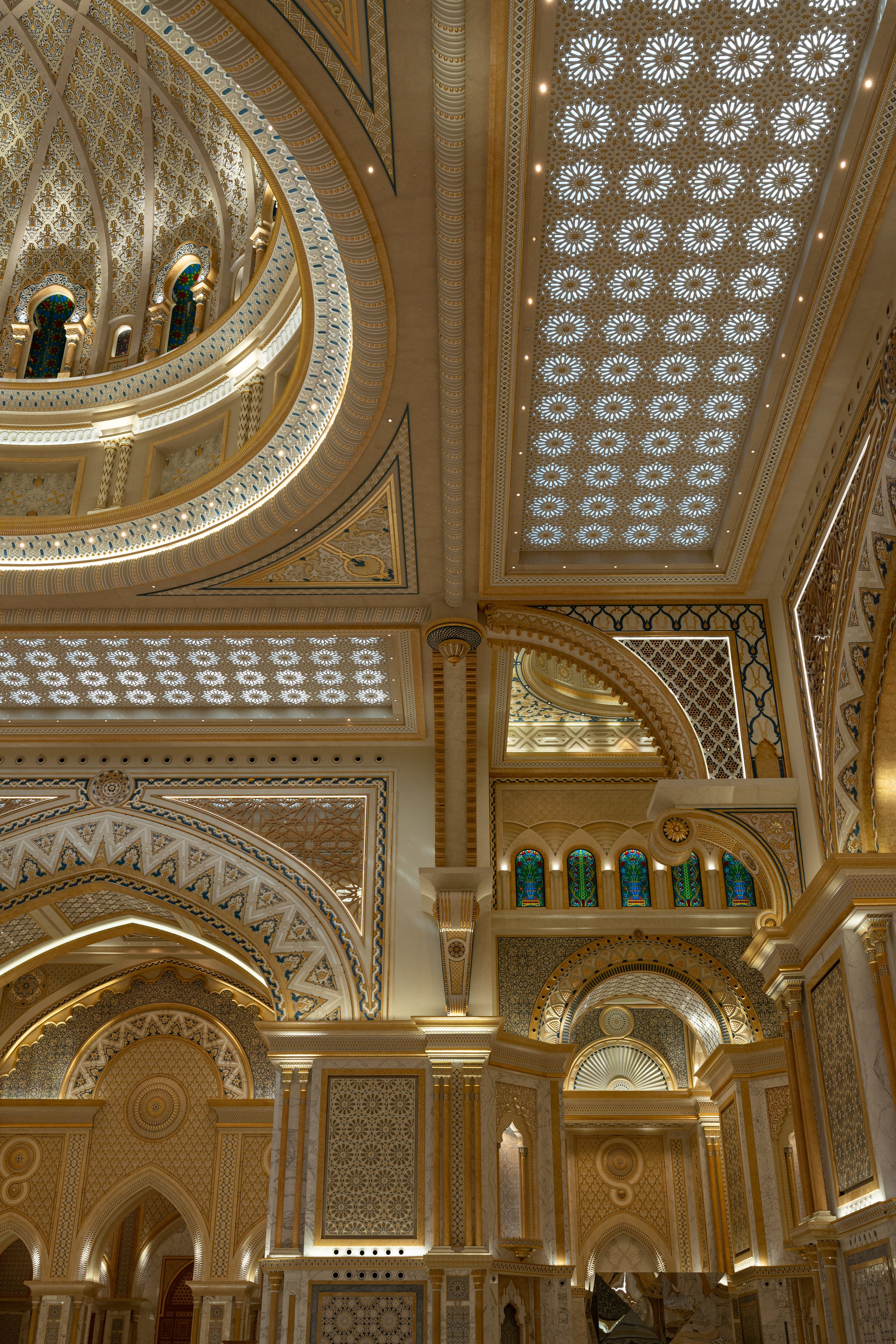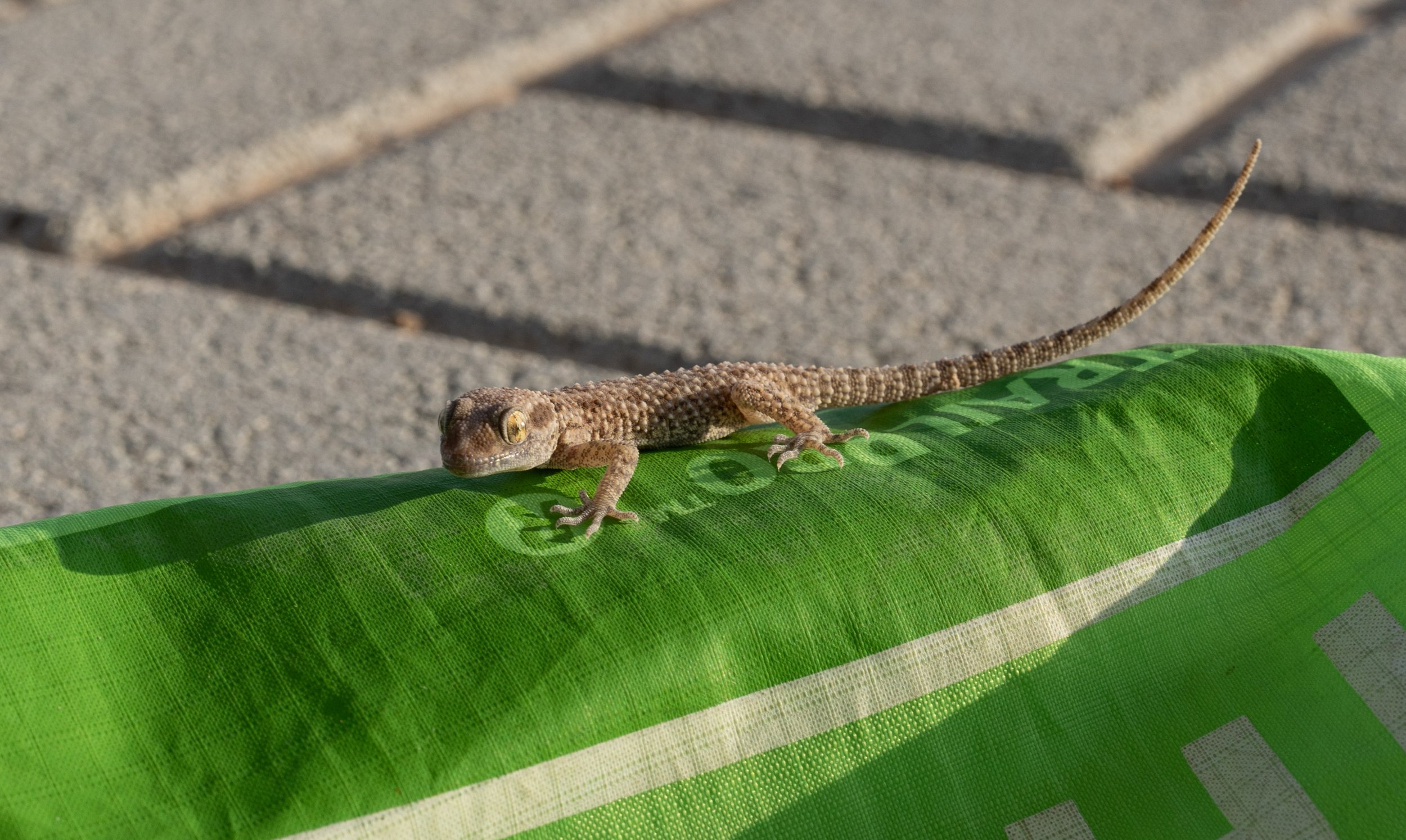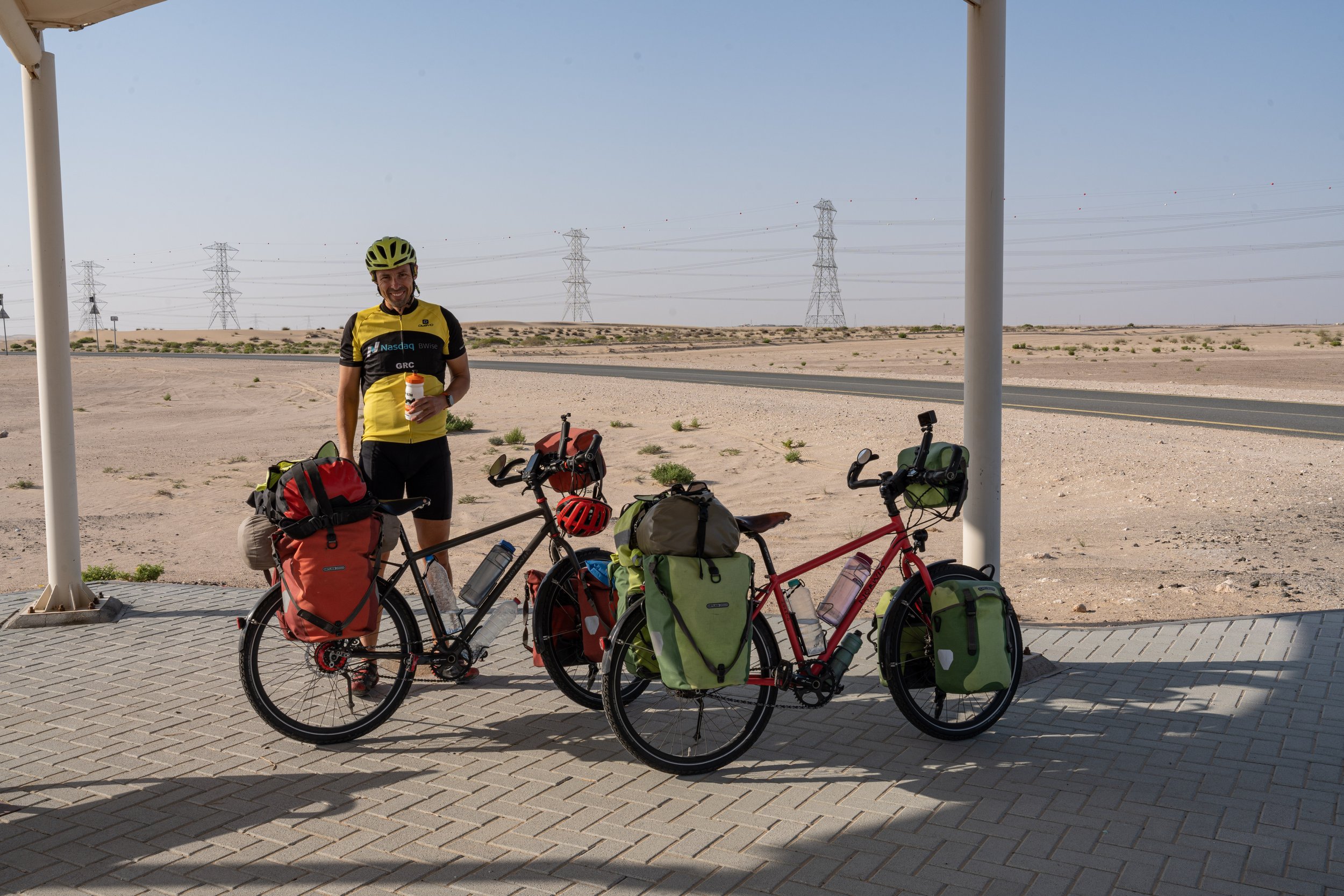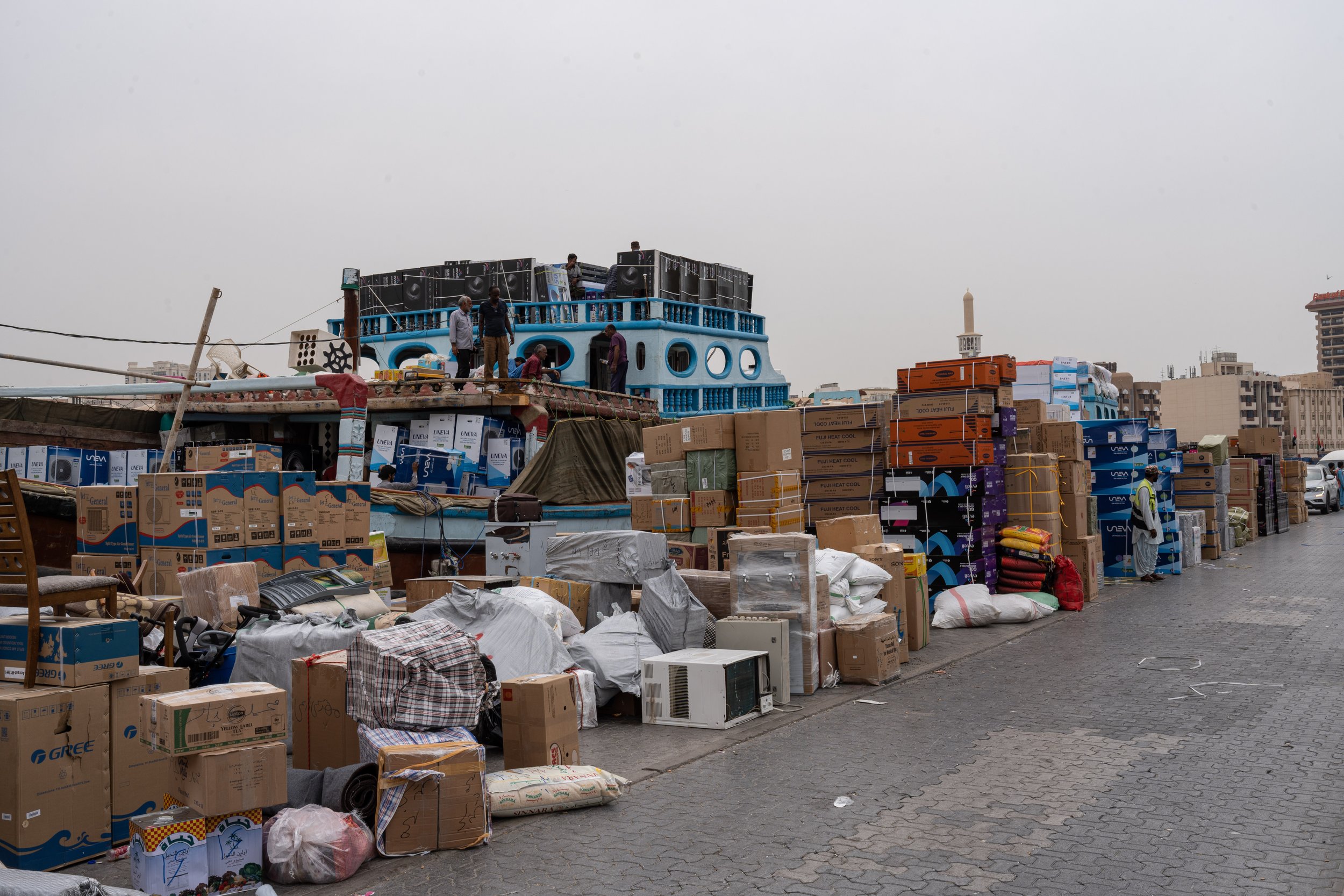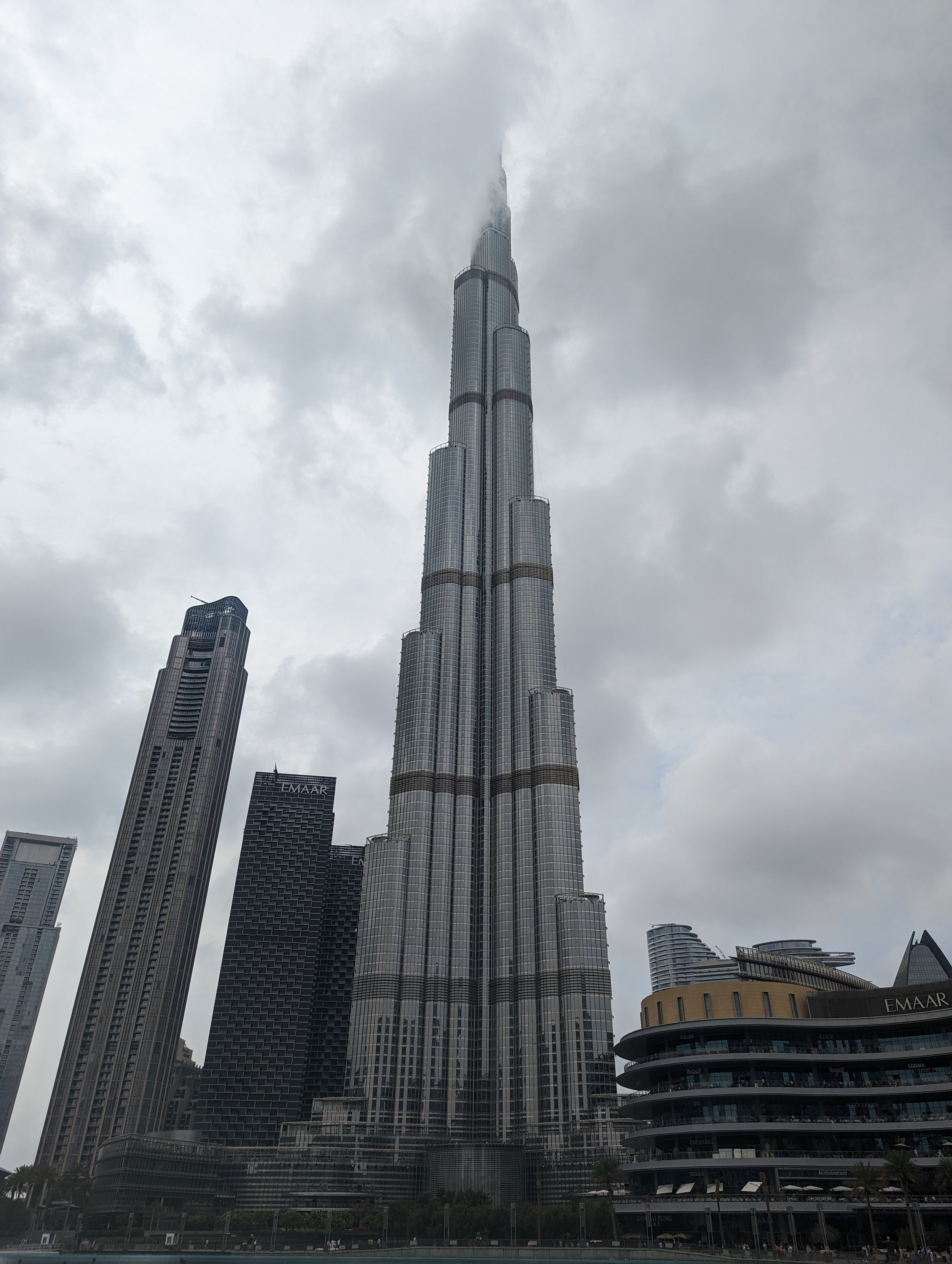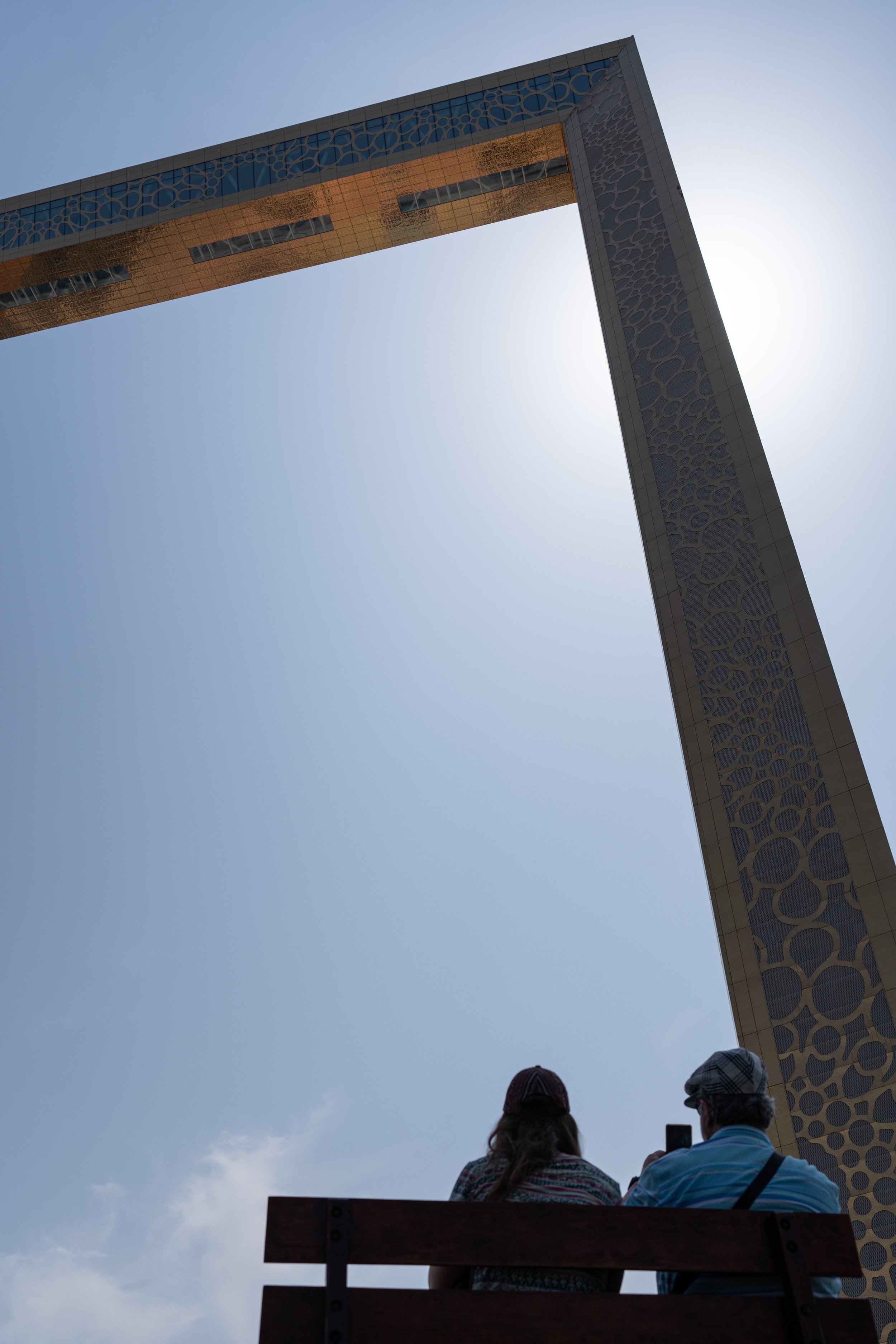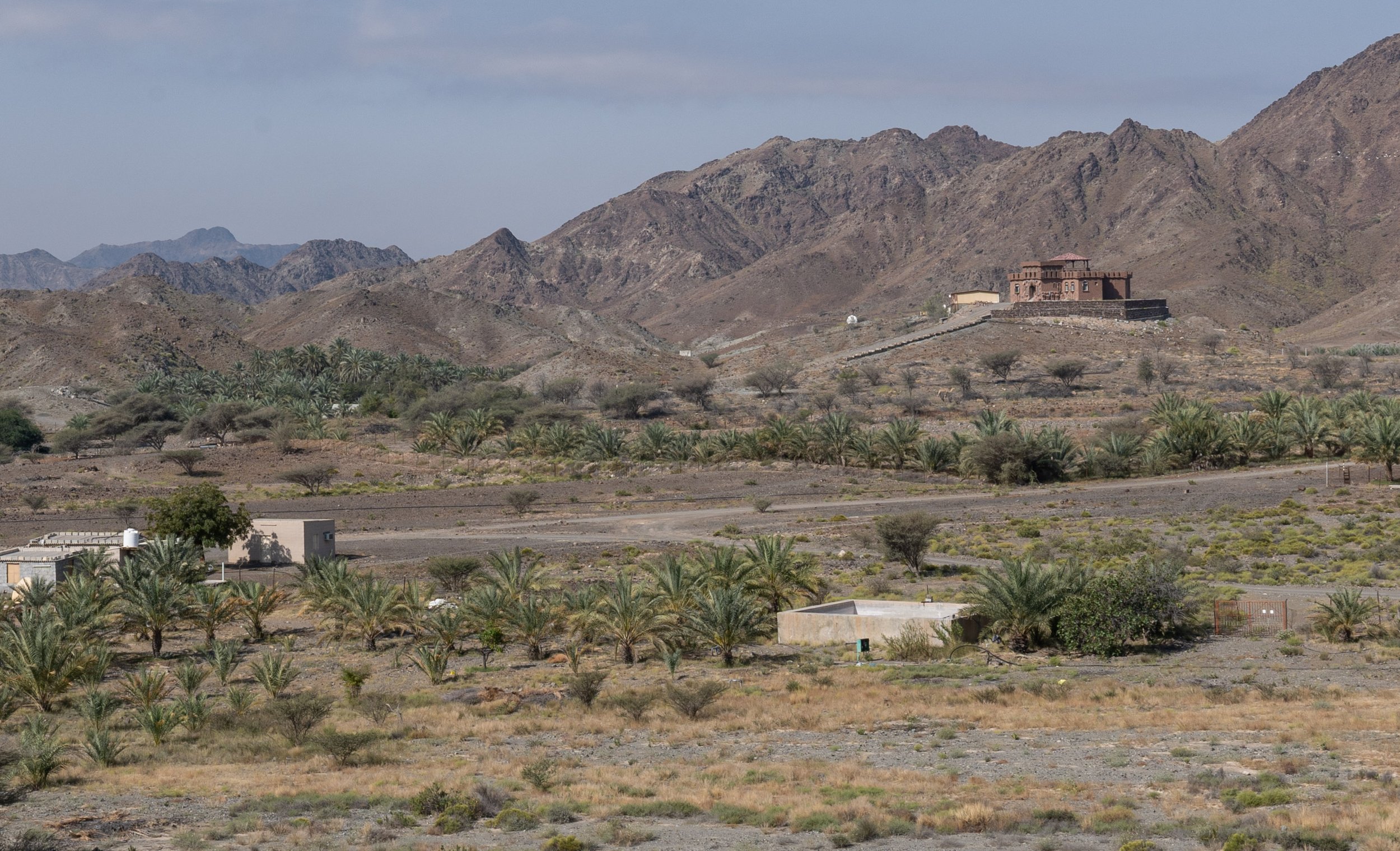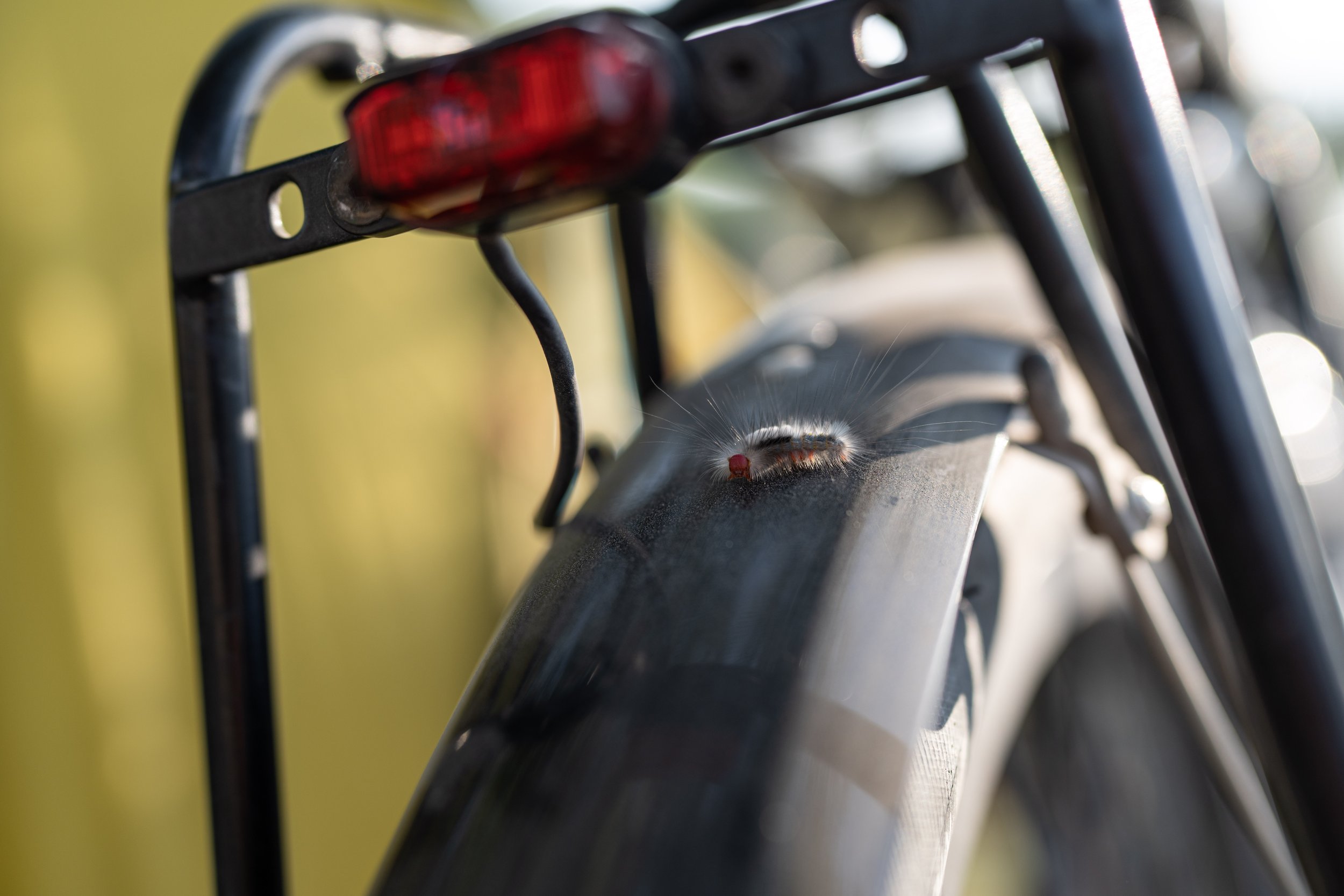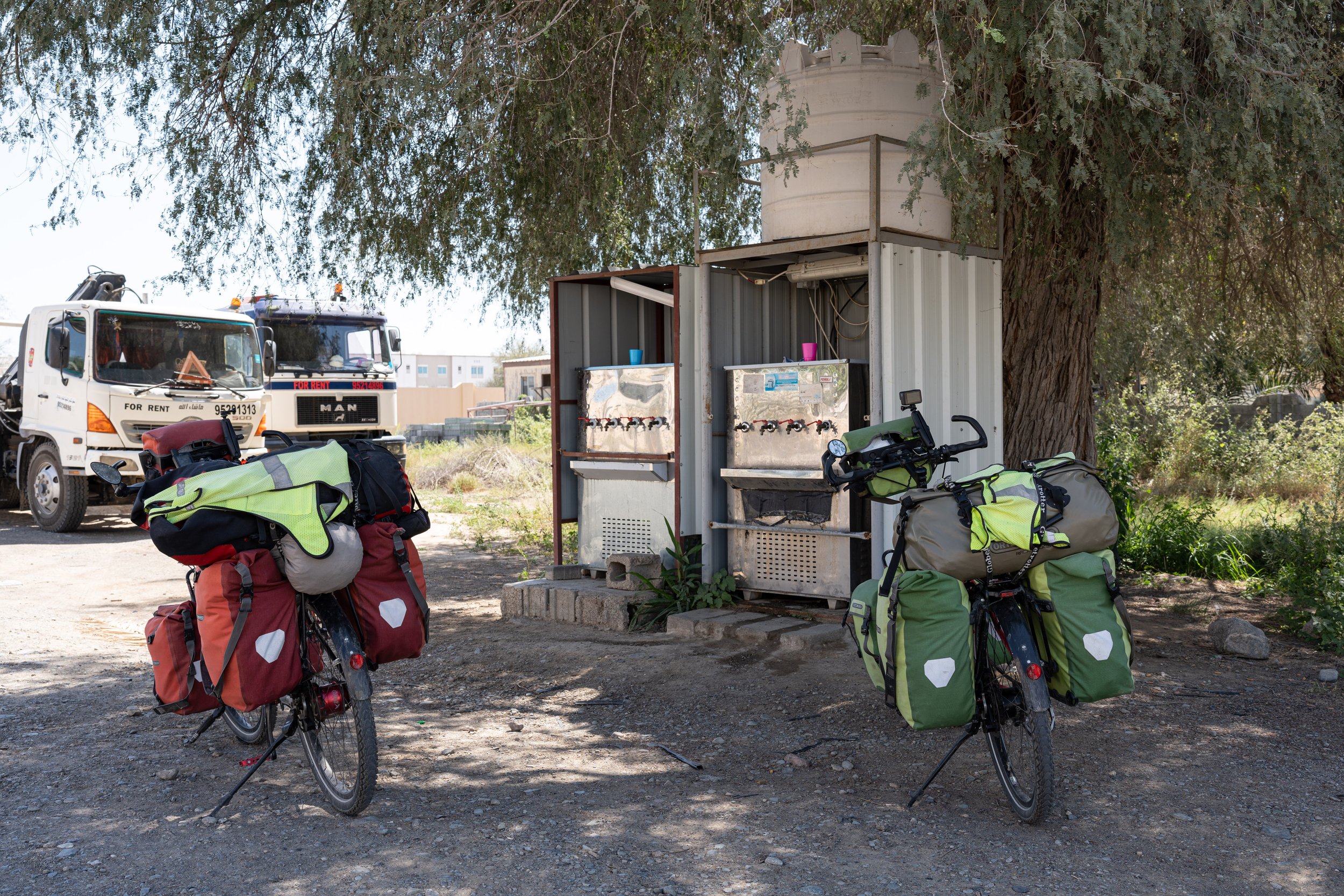From Riyadh to Muscat - the Arabian Peninsula is crossed
Straight through the empty desert
East of Riyadh borders one of the largest sandy deserts on earth. To get to the Gulf Coast and the United Arab Emirates, we had to go through there. A favorable tailwind drove us out of the metropolitan area. For the first time since last summer, the sun was now so high that it was already scorching by midday, which is why we took longer lunch breaks whenever possible. During one of these breaks we met the sales manager of a Dutch company that sells seeds for lettuce and cucumbers. That must be a tough job here, because the Saudis' demand for lettuce seems to be rather manageable from our point of view... Al-Kharj was the latter larger town, after which it first went through an agricultural zone and then really into the desert. On this occasion, the wind unfortunately turned to the north or south side for a few days, and that too quite strongly. The main problem, apart from the braking effect of the wind, was the sand, which was constantly being blown from the left across the road and up towards us. When a truck passed us, an extra blast of wind and sand followed. We pulled our buffs over our faces to protect ourselves from sand and sun. Sand dunes stretching to the horizon, and a road with one of the longest stretches of straight road in the world: Not a single real bend for around 240 kilometers! (There are now a few gentle bends, however, where the new road bypasses the route of the old.) On this stretch we seemed to evoke pity from passing truck drivers, we were frequently invited for lunch or coffee, or shopkeepers declined on us paying for our purchase. At night we were rewarded with a clear starry sky. One morning two large herds of camels were walking past our overnight stay. According to their shepherd, they came from Dubai and are now probably marching to their new owner in Saudi Arabia. Fortunately, since Riyadh we have been able to travel without an escort again. It was almost over only shortly before the Gulf Coast: As so often, a police patrol stopped behind us. This time, however, the driver seemed somehow stricter and demonstratively grabbed his Kalashnikov from the passenger seat and placed it onto the back seat of his vehicle. He immediately pointed to the bicycles and then over to the bed of his car, we should load everything into his vehicle. We conveyed to him via Google translator that it would be very bitter to have to switch to a car so close to the Gulf Coast - he gave in. A bit grumpy, he let us drive. Before the border to the Emirates, we drank a very good Saudi coffee again, then we went over to the Emirate of Abu Dhabi quite quickly. We fought our way through the headwind to the first Emirati town (Al Sila). The place had a slightly different climate than the surrounding area, a bit wetter and cooler, which may have been due to the proximity to the sea and the rich vegetation. We pitched our tent right on the Persian Gulf - we had crossed the Arabian Peninsula, from the Red Sea to the Gulf Coast.
Between skyscrapers and other gigantisms
Al Sila was a nice break from the desert - parks, palm trees and drinking water fountains. There we filled up water and went back into the headwind. Outside the town, the landscape was flat and barren. Not even sand dunes loosened up the picture. In addition, there was the decent heat, in which we were grateful for every little shade - even if it was only the two square meters behind a buoy washed up by the storm tide... It remained windy during the day, dust penetrated even the smallest gap. At least the wind always died down reliably at night, so that the nights stayed calm. In one day the wind and the dust it whipped up became almost unbearable. In the midst of this dust storm, we found a Korean restaurant in the middle of nowhere at noon - there was chilled water, the bath was for washing, the air conditioning was turned on, and very good Korean food was served. It's phenomenal how people can isolate themselves almost completely from the surrounding conditions with a few walls and a roof. In the west of the Emirate of Abu Dhabi, we headed for Al Dhannah City, a new city that the national oil company (ADNOC) had built out of the ground for the employees of a nearby refinery. The place has manicured sidewalks, zebra crossings, flower beds and hedges, palm trees and ponds. There are even bus stops. And the plastic bags in the supermarket cost extra if you didn't bring your own bag. Very different from the previous cities in the Arab world. The ADNOC logo can be seen everywhere, on house walls or even in the form of a hedge. Corporations instead of classic municipalities and states are building entire cities here in an empty, sometimes hostile environment. It was exciting to see that, even if there is of course a questionable side to us: the workplace and the center of your life are strictly linked. Between the pretty Al Dhannah and the city of Abu Dhabi there were still several kilometers of barren plains waiting for us along the noisy road through the howling wind. A landscape like a test image - it always sounds the same and ugly too... The drive into the capital Abu Dhabi was difficult because the roads are even less suitable for bicycles than elsewhere. In downtown Abu Dhabi, the picture changed abruptly: suddenly we were able to access a new and convenient cycle path network. The cityscape of Abu Dhabi is characterized by modern skyscrapers. Although these are all one size smaller than in neighboring Dubai, they are still worth seeing. In Abu Dhabi we visited two newer monumental buildings: the Sheikh Zayed Mosque, which combines traditional forms with modern concrete construction, and the Qasr Al Watan presidential palace, which literally overwhelms you with its pompous interior design. The front door is opened for each visitor by a security guard who is constantly looking out through a small window to ensure that no visitor is overlooked. The main hall is crowned by a large dome. The decoration combines traditional Arabic design language with modern elements, which is referred to here as the Khalifa style. Incidentally, at night the facade of the palace serves as a projection surface for a light show, during which the entire building seems to start dancing. Also well worth seeing was the exhibition at Qasr Al Hosn, a small, modest late 18th-mid 20th-century palace that – once completely isolated on the barren island – was once the seat of Abu Dhabi's ruling family. A watchtower from 1795 is the oldest surviving building in the city. Incidentally, one encounters pretty much all cultures on the streets of Abu Dhabi, what makes the city different from Riyadh. We continued cycling northeast, where we made it to the Al Qudra Cycle Path in the desert south of Dubai: here, in the middle of the sand dunes, a network of cycle paths was laid out, which is used extensively by Dubai residents as a racing cycle track. On this bike path we also met Henning, who moved with his family from Germany to Dubai for the job and invited us to his home. After a year there was a real wheat beer and even pretzels, because there is also a Munich bakery in Dubai. Thank you Henning! In Dubai we took a longer break of three weeks. First up was the visit to the tallest building in the world, the Burj Khalifa. Then Sonja's dad Alex came over for a week to explore the other sights of Dubai with us. What was generally noticed: with almost everything that is newly created, be it a flower garden, a water fountain or a hotel, it always has to be the largest, longest or thickest in the world. But Dubai also has a preserved old town with a very good museum in the “Creek” area. And traditional wooden boats still ply the river, ferrying passengers (abras) or cargo to nearby ports (dhows).
Every Arab country is different, including Oman
From Dubai we cycled east to the Hajar mountains. This mountain range, well known to geologists, which was formed by the collision of the Arabian Plate and the Eurasian Plate, belongs mostly to Oman. However, the Emirate of Dubai also has a small area in these mountains around the town of Hatta. We cycled through the barren plain one last time until we could already see the Hajar mountains. With more rain falling in and around the mountains, the landscape became greener and friendlier the further east we went. The streets became quieter and cycling was more comfortable than it had been for a long time. However, we always had to eat and drink in secret, as it was now forbidden to eat and drink in public during the day for a month due to Ramadan. In Hatta we headed for Mohammed's Bike Travelers Camp, where cyclists can camp for free. We found enough shade under the numerous trees. The area around Hatta is worth a visit: in addition to hiking trails and mountain bike trails, there are restored stone tombs that are around 5,000 years old. After exploring Hatta, we let ourselves be blown into Oman by a strong tailwind. The border crossing was again completely problem-free (for Oman, however, the visa must be applied for online beforehand, as is the case with Saudi Arabia). A surprising finding for us on this trip was that all the Arab countries we visited differ greatly in terms of cityscape, infrastructure and daily habits. Oman was no exception here: suddenly we could be on normal, single-lane country roads again, which not only connect individual parts of the city, but also cities. Everything seemed much more relaxed and authentic than in the Emirates - the fact that there were sofas in public everywhere in the coastal towns certainly supported this impression. On the ocean coast we found really nice roads: often good asphalt, hardly any traffic, but above all running directly behind the wooden shacks of the fishermen. Always along the beaches near which, according to legend, Sinbad the Sailor was said to have been born. What a scenery! The fishermen use ancient 4x4s (which have long since seen a road) to push and pull the boats on the beach. Many rusted and dented cars are therefore lying around, mostly near the same number of sofas. And the area is quite green by nature: the Batina plain is already affected by the monsoon. We were really surprised, because we had assumed that the passage through the densely populated Batina plain could be a bit boring - instead, one of the most beautiful passages of the entire trip so far was waiting here! While camping near the beach we even met the two Swiss Unimog travelers who we had met in Saudi Arabia at the “Edge of the World”. Soon we reached Muscat, where we prepared everything for the onward journey. While carrying the bike boxes for packing the bikes, we met Eddy from Tanzania. Tanzania was once an Omani colony, which is why there is a sizeable Tanzanian community in Oman. In the evening Eddy showed us some beautiful places in the city and Tanzanian food - these dishes alone would be worth a trip there. Thank you Eddie!
Now the question may arise as to why we need bike boxes again. Another ship on which we can only take the bikes packed? No. The statements of various agencies that arrange places on cargo ships were clear: it is forbidden to enter or leave the Arabian Peninsula on cargo ships (apparently due to "security concerns"). The same would also apply to India. And there were no connections with cruise ships at that time either. Despite intensive research, we were now at a point where we could only get through Iran or by plane. Since we still ruled out the first option due to the security situation, unfortunately only the second option remained. But we didn't fly to the same destination either. Nothing has been as certain as the change of plan. Nothing will remain as certain as the change of plan. And a bike tour is by no means always easy, contrary to the public image. After much deliberation, Sonja decided not to continue the journey for the time being. She flew back to Munich from Muscat, while Matthias left for Mumbai. This blog will be continued as usual, probably next with the report on cycling through India. Matthias will also continue to publish the routes cycled on Komoot. The trip goes on!
About cycling on this section
From Riyadh to Al Batha: Leaving Riyadh, we first used smaller side roads west of road no. 65, as the latter is quite busy. Nevertheless, before Al-Kharj we switched to road number 65, which was always easy for us to cycle on due to the wide hard shoulder. There are many supply options along the way. From Al-Kharj we followed road no. 10 east. The condition of the route is not quite as good as most of the Saudi main routes, but it is still a good ride. Unfortunately, the route has a fairly dense truck traffic. From Al-Kharj shopping opportunities are becoming increasingly rare and from Haradh at the latest there should be sufficient supplies, as there are up to 140 km between two gas stations. There is a 240km straight road between Haradh and Al Batha. This is long and, depending on the direction and strength of the wind, very long or very very long. The weather forecast should therefore be kept in mind.
United Arab Emirates: The roads in the Emirates are generally in very good condition and mostly have wide shoulders. The problem: Cycling is actually forbidden on most roads in the Emirates. We ourselves have never had any problems with the police and don't know any other cyclists who have had such problems - but cycling is only tolerated there. So there is no guarantee that you can get through by bike. Up to Abu Dhabi we basically followed the E11, which we left at the beginning of the Abu Dhabi Industrial City. Getting through the streets of Abu Dhabi to the city center was very difficult. The city streets are very narrow. Where other cities would have two lanes, Abu Dhabi has three narrow lanes of the same width... Once you get to the center, the picture is completely different: a proper network of bike lanes has been created in recent years, pounded out of the ground! From Abu Dhabi we cycled via the E12, E10, E311 and the E14 to the western end of the Al Qudra cycle path, which takes you to the outskirts of Dubai. In Dubai itself, we only cycled to the Expo site on the outskirts of the city and preferred to explore the bike-unfriendly city by metro. From Dubai we went via the E77, E44, E55, some side routes and the E64 to Melha/Al Qor, where we switched to very nice and quiet side routes via Huwaylat to Hatta. Incidentally, the direct connection from Al Madam to Hatta cannot be traveled by third-country nationals, since the border crossings between Oman and the Emirates are probably only open to nationals of the GCC countries (Gulf Cooperation Council). The border crossing east of Hatta is then open to everyone. When leaving the Emirates, a fee of 35 dirhams per person was due, which could be paid by credit card.
Oman: We cycled directly to the coast of the Indian Ocean via the rather empty and good road No. 5. From there we always tried to use the paved road closest to the coast. These are often picturesque streets that always run along the beach directly behind the fishermen's shacks. From time to time you have to switch to the hinterland if the coastal road is not continued in the area of a river mouth. In general, the coast of the Batina plain offered us real pleasure cycling, although the area is densely populated. However, we were also on the road during Ramadan, during which there is probably considerably less traffic during the day than during the rest of the year. So we can't say whether the coastal roads are similarly quiet outside of Ramadan.
